Key Takeaways:
Build stable, privacy-first apps and follow HIG; you cut rejections, shorten review cycles, and protect budget.
Crashes, misleading metadata, and overbroad permissions trigger rejection; use TestFlight, device matrices, and network simulations to catch failures early.
Explain location usage clearly and request it only when essential; this boosts user trust and satisfies Apple’s privacy expectations.
For physical services, use approved gateways and test refunds; compliant payments reduce review friction and lower risk for customers and Apple.
To get a fuel delivery app approved on App Store, submit truthful metadata, provide demo credentials, and respond fast through the Resolution Center.
Optimize screenshots, descriptions, and keywords for accuracy and relevance; improved ASO drives installs and revenue immediately after approval.
Steve Jobs: Details matter. It’s worth waiting to get it right.
Proceeding with this quote, Investors and entrepreneurs, here’s the thing. App Store approval isn’t luck. Its execution.
Apple rewards apps that run flawlessly, request only necessary permissions, and tell the truth in metadata. Your fuel delivery app must prove value fast, explain location use in plain language, and keep payments compliant.
TestFlight is your dress rehearsal. Use it to flush out crashes, polish onboarding, and validate flows across iPhone and iPad. Prepare demo credentials. Adopt a privacy policy that is clear and specific.
Follow Human Interface Guidelines so navigation feels native from the first tap. In App Store Connect, align screenshots, descriptions, and keywords with real features.
If reviewers ask for fixes, respond fast with precise changes. What this means is you turn review from a hurdle into momentum. Do the groundwork, and you’ll save budget, shorten timelines, and launch with confidence.
Hence, the question arises, “How to get your fuel delivery app approved on App Store?”
Build a stable, privacy-first app, align with Apple’s human interface guidelines, use approved payments, submit truthful metadata with demo access, then respond quickly to reviewer feedback.
Let’s walk you through the details for getting a fuel delivery app published on the App Store.
A Brief on App Store Review
All apps submitted to Apple's App Store are reviewed in a systematic review process before publication. Apple utilises the process to check whether apps are compliant with its App Store Review Guidelines, which are based on safety, performance, business integrity, design, and legal compliance.
This review is conducted by Apple's App Review team, who test the app on various devices, verifies metadata, and ensure that it is compliant with Apple's policies.
Generally, reviews are done within 24–48 hours, but can take longer based on app complexity, features such as in-app purchases, location tracking, or background services, and whether the app meets Apple's privacy standards.
If it succeeds, it is approved to be released. Otherwise, Apple gives feedback with rejection reasons so that developers can make adjustments and resubmit.
Briefly, the review process is how Apple ensures quality, security, and trust within its platform.
All About Apple’s App Store Market Stats
Identifying Apple’s app store stats will help you to use it for fostering the practices to publish a fuel delivery app. Let’s learn it all.
-
Till now, only 200 million apps are available on Apple’s App Store.
-
When it comes to charges, the developers or entrepreneurs should enroll in the Apple Developer Program for $99 per year.
With Apple’s app store, now, let’s learn about the pre-submission practices in the following section.
Pre-Submission Practices to Launch Fuel Delivery App
When you create a fuel delivery app, one of the goals is to get it approved on the selected platform. And, if it's about getting your fuel delivery app approved on the app store, this is one of the important challenges that shouldn’t be ignored.
Before you submit, you should make sure your app is properly optimized and on par with Apple's rigorous guidelines.
These pre-submission practices make you more likely to succeed and respond to the frequent question of how to get your fuel delivery app approved on the App Store.
1. Comprehensive App Testing Across Devices
Ensure your app performs smoothly on various iPhone and iPad models. Apple validates for crashes, slow launching, and performance issues.
Thorough fuel delivery app testing lessens rejections and aids your aspiration of how to get a fuel delivery app approved on the App Store.
Aside from that, testing in real-world situations across various internet conditions assists in verifying your app is stable and prepared for diverse end-user environments.
2. Optimize App Metadata and Screenshots
Your app's name, description, keywords, and images need to be true, relevant, and not misleading.
Apple scrutinizes these aspects for compliance, so a well-crafted store listing improves approval rates and helps you get your app approved on Apple App Store.
Always aim for clarity and relevance, as misleading descriptions are one of the leading rejection causes for iOS apps. This tiny effort can significantly enhance visibility upon approval.
3. Adherence to Privacy and Security Regulations
Fuel delivery apps process sensitive information such as location, payments, and personal data, so secure handling is essential to pass your fuel delivery app on the iOS Store.
To escape rejection, install secure payment gateways, open privacy policies, and robust data protection. Fuel delivery app security is a crucial aspect for enhancing users’ trust.
Apple is particularly rigorous when it comes to applications utilizing location services, so limit permission requests to when needed and describe them clearly to end-users. This comforts Apple and end-users regarding your app's security.
4. Compliance with Apple's UI/UX Guidelines
Make user experience your top priority. Make sure your app is well-organized, with clear navigation and consistent design, and accessibility in place. Streamlined UI not only keeps users interested but also makes approval quicker.
Streamlined layouts, uniform buttons, and correct usage of iOS design patterns prove your diligence in following Apple's Human Interface Guidelines.
This fosters faith throughout the review and enhances retention after release. Regulated compliance in fuel delivery comprises features and protocols that are real-time order tracking, secure payment integrations, and more.
5. Prepare Documentation and Support Materials
Apple can ask for more information, like demo accounts or API documentation. Offering it in advance helps maintain transparency and accelerates the review process, enabling you to determine how to have your fuel delivery app approved on App Store.
Offering a complete test login, backend information, and feature descriptions demonstrates that your app is thoroughly prepared and eliminates delays due to a lack of information.
6. Beta Testing with TestFlight
Testing with TestFlight before submission enables you to identify lurking bugs and gather user opinions. A solid, thoroughly tested build conveys dependability to Apple's review team.
TestFlight results also constitute verification that your app performs with actual users, which improves its approval prospects. Not only does this enhance technical quality, but it also generates early supporters for your product.
Technical Requirements to Meet While Approving Fuel Delivery App
A fuel delivery app tech stack is what you cannot take lightly; whether it's about building it or approving it over the platforms, it's essential to learn every aspect related to technology.
Meeting Apple’s technical guidelines is critical for passing the App Store review process. Below are the must-follow requirements that directly impact how to get your fuel delivery app approved on the App Store.
1] App Performance and Stability
Apple will reject apps that crash, freeze, or lag when used in everyday scenarios. Make sure your app performs well under various network conditions and heavy-traffic loads. Performance optimization makes Apple confident that your gas delivery app will perform well in real-life usage without issues.
2. Data Privacy and Security Compliance
Mobile app security processes location, payments, and personal data need to adhere to Apple's privacy framework.
Secure encryption, GDPR compliance, and transparent privacy policies are a must. Discussing data protection directly avoids how to get your fuel delivery app approved on the App Store rejection delays.
3. Payment Gateway Integration
If your app handles transactions, it needs to use gateways through Apple's in-app purchase or approved third-party gateways. Anything else will cause rejections. Correctly testing payment flows is essential for user trust and approval by Apple.
4. Location Services Configuration
Fuel delivery apps use GPS to track orders and deliveries. Apple demands accurate permission prompts, reasons for background usage, and optimal battery use. Location services' misuse frequently results in rejection at approval time.
5. UI/UX Congruence with Apple's Human Interface Guidelines
Apple focuses on clean fuel delivery app design, simple navigation, and consistency with iOS expectations. Adhering to design guidelines not only improves user experience but also raises your prospects of approval. Substandard UI/UX is among the most prevalent reasons for rejection.
6. App Size and Compatibility
Your app needs to be optimized for various iOS devices and versions, with a minimal download size for optimal functionality. Compatibility on various screen sizes (iPhone SE to iPad Pro) is a significant checkpoint for approval.
|
Requirement |
Description |
|
App Performance & Stability |
Ensure smooth functioning under varied conditions; no crashes or long load times. |
|
Data Privacy & Security |
Use encryption, GDPR compliance, and clear privacy policies to protect sensitive data. |
|
Payment Gateway Integration |
Must follow Apple’s in-app purchase rules; test secure and seamless transactions. |
|
Location Services Configuration |
Justify background usage, optimize GPS, avoid battery drain, and request permissions clearly. |
|
UI/UX Guidelines |
Follow Apple’s Human Interface Guidelines for an intuitive, consistent app experience. |
|
App Size & Compatibility |
Optimize for multiple iOS versions and devices; minimize app size for easy downloads. |
How to Get Your Fuel Delivery App Approved on the App Store?
When it's time to start an online fuel delivery app business, evaluating the platforms to launch your app plays a significant role. For the App Store, it's significant to identify the prominent guidelines.
Apple's App Store has the most stringent review process in the market. For developers and companies, learning how to get your fuel delivery app approved on the App Store is to comply with each requirement with utmost precision.
Follow the step-by-step practices listed below to help you navigate an easier approval process.
Step 1: Prepare Your App According to Apple Guidelines
Before submission, read Apple's App Store Review Guidelines very carefully. These include safety, performance, business rules, design, and compliance with the law.
Make sure your app delivers real value to pass your fuel delivery app on the iOS Store. Apple rejects apps that feel spammy or redundant.
Test that all features work. Half-baked content or filler content is a rejection reason.
Check for compliance with Apple's guidelines on user-generated content, advertising, and in-app services.
By designing your app early based on these standards, you minimize the chances of rejection and solve the issue of how to get your fuel delivery app approved on the App Store from the very beginning.
Step 2: Test for Performance and Stability
Apple puts tremendous focus on stability and reliability.
Try your app on various iOS devices, ranging from older iPhones to the new iPads.
Simulate various network speeds (Wi-Fi, 4G, 5G, poor coverage) to test responsiveness.
Perform stress testing to validate that your backend can process high-order volumes without dragging. With thorough mobile app testing, you can overcome the issues related to performance and stability.
Your app crashes or lags on Apple's review team and is rejected on the spot. Thorough testing guarantees your fuel delivery app provides a seamless, real-world experience.
Step 3: Validate Data Privacy and Security Compliance
Working with sensitive data means Apple strictly enforces privacy checks.
Apply end-to-end encryption to location, customer, and payment information.
For Fuel Delivery app approval on Apple App Store, offer a privacy policy link in App Store Connect and inside the app.
Ask only for permissions your app actually requires; requesting extraneous access (such as contacts) is a warning sign.
Make your app GDPR and CCPA compliant if advertising to global crowds. It will help you publish a fuel delivery app faster on the iOS store.
This fosters transparency and creates trust among users, a crucial component in getting your fuel delivery app approved on the App Store.
Step 4: Set Up Location Services Appropriately
Fuel delivery apps depend greatly on GPS for pickup, drop-off, and tracking. Apple closely examines apps that use background location services.
Request location permission only when necessary and offer in-app explanations ("We need your location to deliver fuel at the right spot").
Legitimately explain background tracking in the submission notes.
Optimize GPS use to reduce battery drain, as unnecessary drain is a frequent rejection cause.
By demonstrating to Apple that you value user privacy while supporting seamless delivery tracking, you protect approval opportunities.
Step 5: Implement Payment Gateways Properly
Payment processing is a high-risk rejection area, so handle it correctly to get your handyman app approved on the Apple App Store.
For physical services such as fuel delivery, you may implement external gateways like Stripe, PayPal, or Razorpay.
For digital services or subscriptions, Apple mandates the use of in-app purchases (IAP).
Test the entire checkout journey, from cart to confirmation, ensuring it works without errors.
Add clear refund and cancellation policies to reassure Apple and users, and help you Get your handyman app approved on Apple App Store.
This fosters compliance and trust, two essential elements in the Apple ecosystem.
Step 6: Optimize Metadata and App Store Listing
Your app listing is the first thing Apple and users see.
-
Title: Should be indicative of your app's purpose ("Fuel Delivery App" instead of generic titles).
-
Description: Clearly describe features without overhyping them.
-
Screenshots: Clear, high-quality images that show your app's actual functionality.
-
Keywords: Apply relevant keywords, but don't stuff or mislead using them.
Apple doesn't accept apps with misleading or incomplete listings. A well-tailored profile enhances credibility and approval opportunities.
Step 7: Upload through App Store Connect
Your app submission is made through Apple's official channel, App Store Connect.
Build, archive, and deliver your app using Xcode. Fill in all necessary information: description, app icon, category, price, and contact information.
If login is necessary, include a demo account and password for Apple testers. Verify that all fields are filled out; incomplete information can hold up the review.
Timely submission conveys professionalism and hastens Apple's decision.
Step 8: Answer Apple's Feedback Promptly
Even perfectly prepared apps get rejected the first time. Don't stress, it happens frequently.
Apple gives good reasons for rejections in App Store Connect.
Correct the issues quickly and resubmit with comments explaining the changes.
Be professional when interacting with Apple reviewers, as their feedback cycle is important for approval.
Monitor re-submission time frames and be ready for several iterations if needed.
Timely, open feedback demonstrates your seriousness and dramatically increases your chances of getting approved. Well, connecting with the leading mobile app development company can help you foster the process of fuel delivery app submission to the app store.
Why Your Fuel Delivery App Gets Rejected on the iOS Store?
The reasons can be poor app performance, misleading metadata, privacy and data handling issues, and the improper use of location services. Fuel delivery app challenges often happen for many reasons, and one common cause is rejection during submission to the iOS App Store.
Well-designed apps are also rejected during Apple's review process. To learn better how to get your fuel delivery app approved on App Store, it's essential to first know the common errors that lead to delays and denials.
A] Unstable or Poor App Performance
If your fuel delivery app freezes, crashes, or takes too long to load, Apple rejects it outright. Performance ranks as a high value for user experience and safety.
Testing on many devices and networks is important to prevent such a failure and enhance the way to get your fuel delivery app approved on the App Store.
B] Incomplete or Misleading Metadata
Apple thoroughly examines the app name, description, keywords, and screenshots. Deceptive assertions, low-quality images, or inaccurate descriptions are red flags.
To approve your listing, make sure that your listing holds true to your app's purpose and functions.
C] Privacy and Data Handling Issues
Fuel delivery apps gather sensitive data like location, payment information, and customer information.
If the permissions are not justified or the privacy policies are obscure, Apple declines the app. Transparent policies and proper encryption of the data are necessary.
D] Improper Use of Location Services
Since location tracking is essential for delivery, Apple demands responsible configuration.
Apps abusing background GPS, draining battery inappropriately, or not having justification for tracking permissions are rejected. Responsible location configuration is the essence of approval.
E] Non-Compliance with Payment Rules
If you implement payments in your app in the wrong way, particularly by skirting Apple's rules, your app may be rejected.
Physical fuel delivery is acceptable with approved third-party gateways, but transactions need to be transparent. Simple, secure checkout ensures approval.
F] UI/UX That Disregards Apple's Guidelines
Poor navigation, irregular design, or violation of accessibility guidelines results in disqualification.
Apple requires apps to comply with its Human Interface Guidelines. A well-designed, intuitive, and consistent UI boosts your chances when deciding how to get your fuel delivery app approved on the App Store.
Now, as you have evaluated the reasons for failure, let's get ahead with the effective practices for adopting the fuel delivery app in the proceeding section.
Practices to Adopt if Your Fuel Delivery App Gets Rejected
If you want to stand among the top fuel delivery apps, it's essential to know what types of practices they adopt to avoid rejection on the app store.
Being rejected by Apple is normal and not the end of your app. Rather, it's an opportunity to improve and resubmit. What follows are real-life steps you can undertake when navigating how to get your fuel delivery app approved on the App Store.
► Carefully Review Apple's Rejection Notes
Apple gives extensive rejection reasons via App Store Connect. Carefully read these to know if the problem is technical, design-oriented, or policy-related. Solving the cause directly makes resubmission quicker and more efficient.
► Repair Technical Issues and Glitches
If your app was rejected due to crashes, slow performance, or compatibility issues, fix them immediately. Test across devices and networks again before resubmitting. A polished app answers Apple’s concerns and improves your chances of getting your fuel delivery app published on the App Store.
► Update Metadata and App Store Listing
Occasionally, rejections are due to deceptive or incomplete titles, descriptions, or screenshots. Update your listing with correct, clear, and user-centric details. Apple values transparency and truthful representation of features.
► Enforce Privacy and Data Management
Privacy infringements are one of the most typical reasons for rejection. Review your app's data collection practices, requests for permissions, and privacy policy. Reducing unneeded permissions can have a direct impact on whether your fuel delivery app is accepted on the App Store after rejection.
► Seek Clarification from Apple Review Team
If the reasons for rejection are not clear, use the Resolution Center to contact Apple. Being specific with questions not only helps clarify things but also reflects professionalism. Apple will usually direct developers towards suitable fixes.
► Resubmit with Confidence and Documentation
After problems are addressed, resubmit with an accompanying note explaining the fixes. Offer supporting documents or demo accounts if necessary. Showing proactive corrections showcases your dedication and improves approval prospects. This is the practice to be followed if you have evaluated the points closely for submitting the fuel delivery app on the App Store.
Alright, are there any tips to get a faster approval? Well, if you wish to challenge developing an app like Cafu or building an app like ezfill, it's essential to launch a fuel delivery app quickly oonthe App Store.
Hence, let’s get ahead with the pro tips for launching the fuel delivery app on the App Store in the following section.
Tips to Get Faster Approval of the Fuel Delivery App on the App Store
Whether it's a white label app or a custom fuel delivery app, ensuring it has faster approval over the app store is essential.
Having App Store approval may take time at times, but by employing proper practices, delays can be minimized. The following are the tips that make it easier and explain how to have your fuel delivery app published in Athe pp Store quickly.
1. Submit a Bug-Free, Polished Build
Apple does not accept apps that crash, take a long time to load, or have missing features. Test aggressively on various iOS versions and devices.
The cleaner your initial submission, the quicker Apple will approve it. Submitting an optimally built app eliminates most reasons for rejection.
2. Give Complete and Accurate Metadata
Complete all necessary fields in App Store Connect, app name, description, screenshots, keywords, and privacy policy.
Omissions or incorrect information frequently hold up approval. A clear, comprehensive app listing demonstrates to Apple that your app is ready for review and prevents unnecessary back-and-forth.
3. Add Demo Accounts for Review Team
If your app asks users to log in or authenticate, include demo credentials and explicit instructions.
Apple testers require immediate access to test features. By making their review process easier, you accelerate how to get your fuel delivery app approved on the App Store.
4. Be Transparent About App Features
In submission notes, describe features such as location tracking, payment options, or background use.
Clear reasoning avoids ambiguity for Apple's reviewers. Honesty about sensitive features establishes trust and speeds up approval decisions.
5. Adhere to Apple's Human Interface Guidelines (HIG)
Apps deviating from Apple's design standards tend to trigger red flags. Make navigation intuitive, use consistent layouts, and ensure accessibility.
Apple cares about an awesome user experience, so following HIG guidelines speeds up review times.
6. Respond Quickly to Apple’s Feedback
If your app is rejected or Apple requests changes, address the issues immediately.
A fast turnaround shows professionalism and improves re-approval speed. Delayed responses extend the entire process unnecessarily.
Partner with JPLoft and Get Your Fuel Delivery App Approved Faster
Getting an app approved on Apple’s App Store can be a frustrating journey, especially when dealing with strict compliance rules around payments, location tracking, and data privacy. That’s where partnering with the right fuel delivery app development company makes all the difference.
At JPLoft, we don’t just build fuel delivery apps; we build them with approval in mind. Our team understands Apple’s technical, design, and legal guidelines, ensuring your app is fully prepared before submission. From optimizing performance and securing payments to aligning with Apple’s Human Interface Guidelines, every step is designed to minimize rejection risks.
We also streamline the pre-submission process by providing detailed documentation, demo accounts, and compliance checks that satisfy Apple’s review team. The result? Faster approvals, reduced rework, and quicker time-to-market.
Partner with JPLoft to turn your fuel delivery app vision into a reality that not only launches but thrives on the App Store.
Conclusion
Here’s the thing: Apple approves apps that feel polished, honest, and safe. If your fuel delivery app performs well, respects privacy, explains location use, and follows HIG, approval gets easier.
Test on real devices, trim permissions, secure payments, and write clean metadata that matches real features. Share demo credentials and respond fast in Resolution Center. If you get a rejection, fix, document, and resubmit.
Aim for clarity at every step. Adopting the tips, such as transparency, submitting a bug-free and polished app is significant for having a faster fuel delivery app approval on App Store.
FAQs
Follow Apple guidelines, test thoroughly, secure data, justify location, integrate payments, polish metadata, provide demo credentials, run TestFlight, and respond fast.
Most reviews finish within 24–48 hours, but complex features, payments, or background location can extend timelines significantly.
Common issues include crashes, misleading metadata, overbroad permissions, weak privacy policies, poor UI, and incorrect payment integration or disclosure details.
Test across devices and networks, follow HIG, justify location usage, secure payments, provide demo credentials, and address Resolution Center feedback.
For physical delivery services, third-party gateways are allowed; subscriptions or digital goods require Apple’s in-app purchases under Store guidelines.
Encrypt sensitive data, minimize permissions, explain location prompts clearly, publish a transparent privacy policy, and allow users control over data.





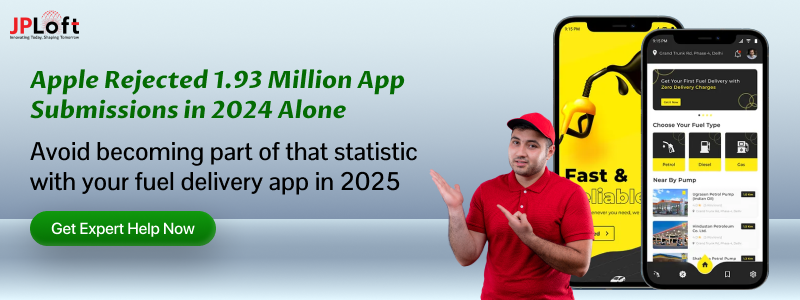
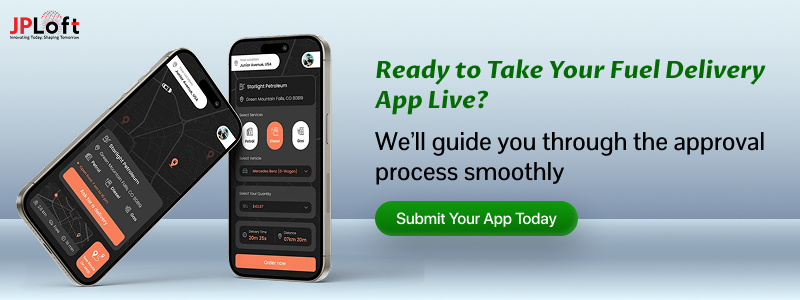

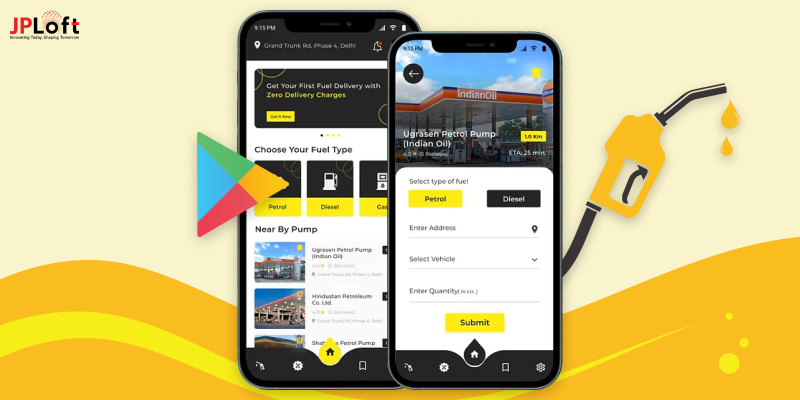
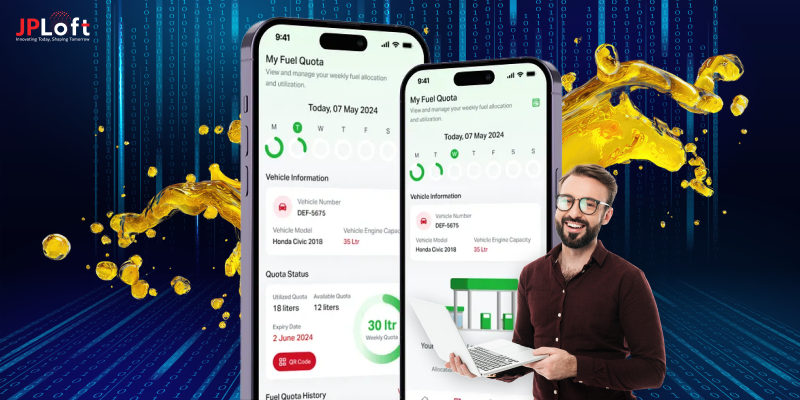
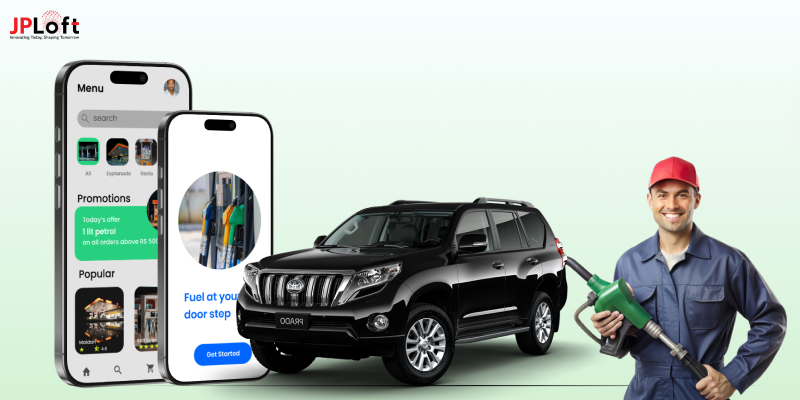


Share this blog